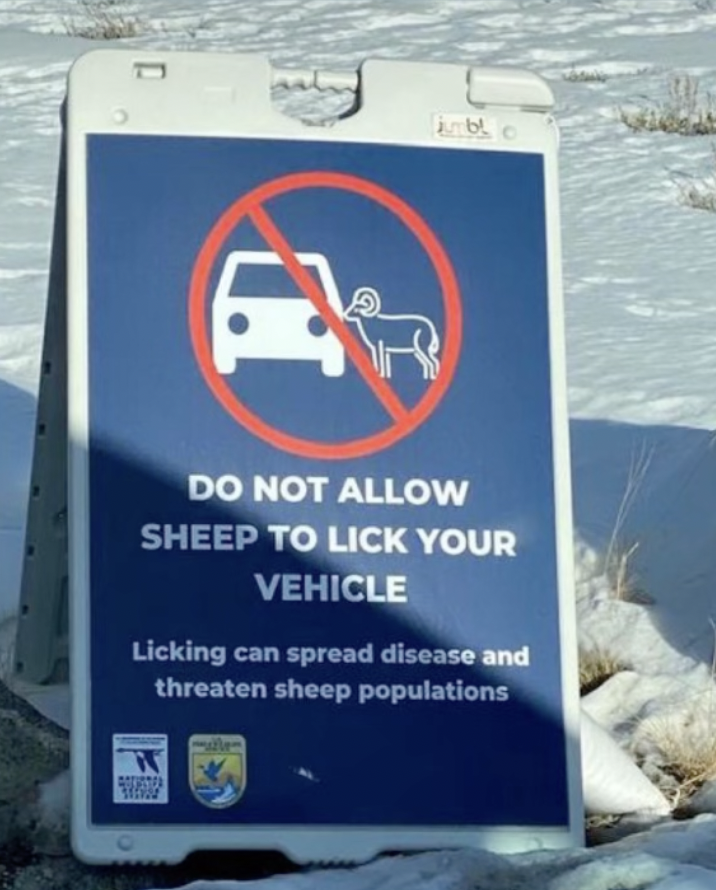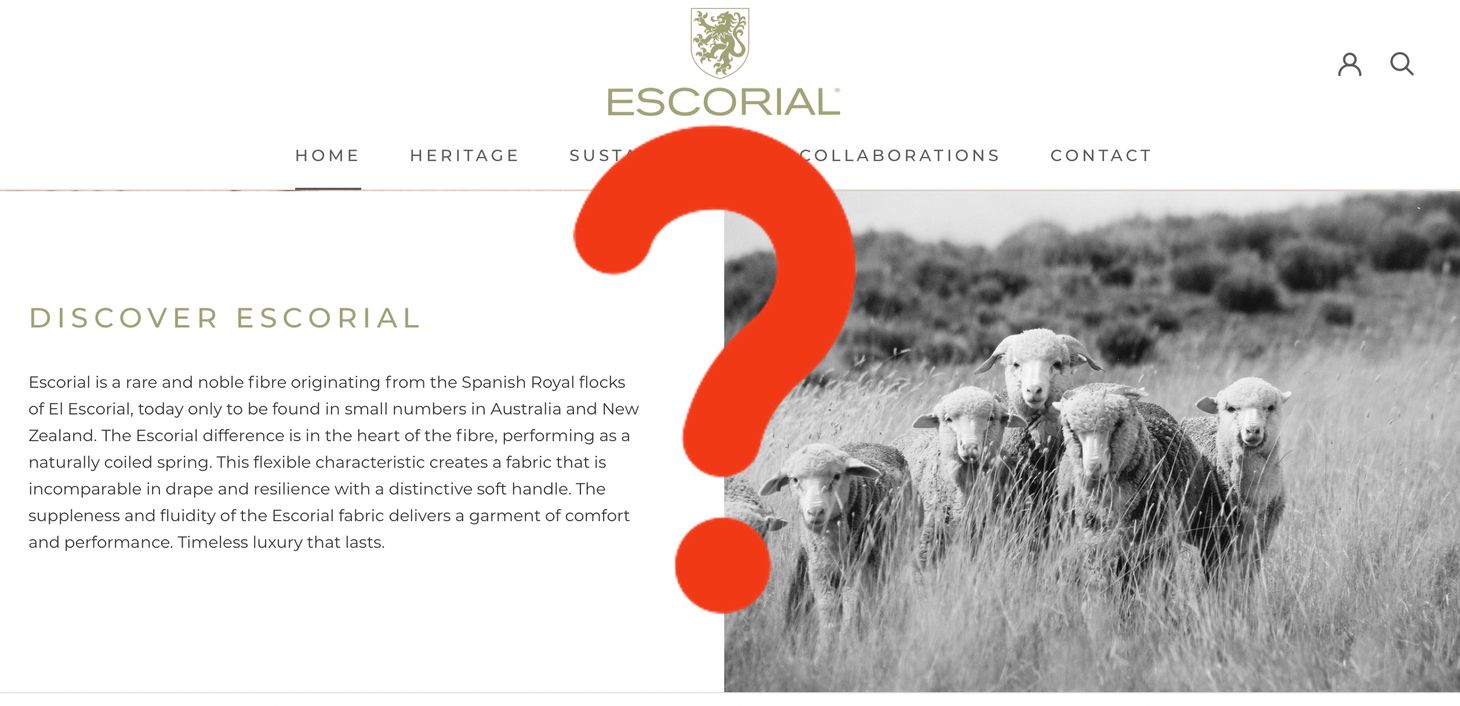What's this about sheep licking cars?

🐏 Calling the Foundation Flock! Our month-end Flock Talk livestream will be this Monday, February 28, at 7pm Eastern. Send me your questions and I'll do my best to fit them in. I have a lot to show you, so I hope you can tune in. 🐏
Earlier this week, my friend Patty alerted me to a rather odd situation unfolding out west, as evidenced by the above photo. Apparently they are having problems with sheep licking cars.
Yes, you heard me.
Naturally, this raised far more questions than answers—so I looked into it.
It turns out the signs are the work of the U.S. Fish & Wildlife Service. They have been placed near designated pullouts inside the National Elk Refuge in Wyoming, where a herd of some 90 thirsty-tongued bighorn sheep resides.
So no, we don't have random gangs of wild Targhee and Rambouillet sheep attacking cars with their tongues. This is a bighorn sheep issue.
The bighorn (Ovis canadensis) is the largest native mountain sheep in North America, having crossed the Bering Land Bridge some 750,000 years ago. Today, the bighorn sheep has been designated a Species of Greatest Conservation need by the Wyoming Game and Fish Department. And this particular herd has already seen two huge die-offs from pneumonia.
It's worth noting that domestic sheep (Ovis aries, the ones that give us wool) carry pneumonia and other diseases that have wiped out a significant portion of the bighorn population already. So the relationship between bighorn conservationists and western wool growers has been (and continues to be) rather contentious.
Yes, but why are they licking cars?
That's easy. Like moose in Canada, sheep are drawn to the salts and minerals that are used on roads in the winter. These materials accumulate on cars, turning them into convenient mobile salt licks for the animals.
Unfortunately, cars accumulate other potentially harmful chemicals that we don't want the animals to consume. Perhaps even more important than those chemicals is the fact that you could have multiple animals licking the same car. Not good hygeine.
The signs have been put out in an attempt to protect bighorn sheep from spreading disease among one another. That could jeopardize the flock and, ultimately, a species that is already under threat.
So, no. Don't let the bighorn sheep give you a free carwash on your next ride through the refuge. And resist the urge to use the moment for a photo op. Just say hi and keep moving.




